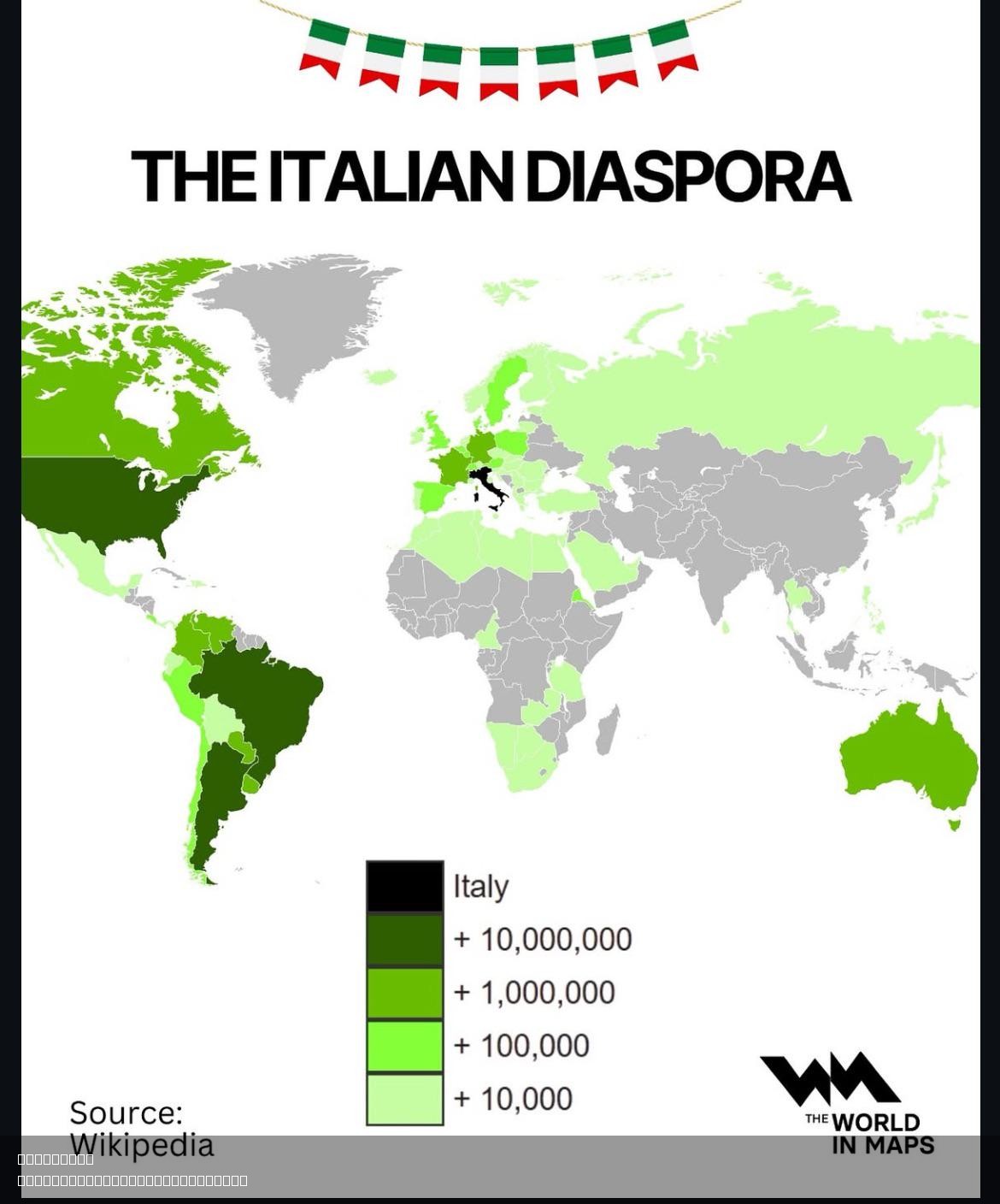Global Italian Diaspora Map


David Chen
Data Visualization Specialist
David Chen is an expert in transforming complex geographic datasets into compelling visual narratives. He combines his background in computer science ...
Geographic Analysis
What This Map Shows
The "Global Italian Diaspora Map" provides a detailed visualization of the Italian diaspora across various countries, highlighting the significant migration patterns that emerged during the late 19th and early 20th centuries. This map not only illustrates where Italian immigrants settled but also gives insight into the origins of these migrants and their cultural impacts in their new homes. As you explore the map, you'll notice clusters of Italian communities in regions such as Argentina and Brazil, showcasing how these areas became integral to the Italian migration narrative.
Deep Dive into Italian Migration Patterns
The Italian diaspora is a compelling story of movement and adaptation. Between 1876 and 1976, an estimated 25 million Italians left their homeland, driven by economic turmoil, political instability, and the promise of a better life abroad. Interestingly, the majority of these emigrants came from Southern Italy, with regions like Calabria, Sicily, and Campania being the most notable contributors. This migration was not simply a mass exodus; it was a response to local conditions that forced many to seek opportunities elsewhere.
During this era, Argentina emerged as a primary destination. What's fascinating is that about 80% of the Italians who immigrated to Argentina hailed from Southern Italy. They were lured by the promise of urban job opportunities during a time of industrial growth in cities like Buenos Aires. These immigrants significantly influenced Argentine culture, particularly in the realms of language, cuisine, and even dance—most notably, tango. You can still see the impact of this migration today in the vibrant Italian neighborhoods found in major Argentine cities, where the legacy of these early settlers thrives.
On the other hand, Brazil's story is quite different. Approximately 80% of Italian immigrants there came from the Northern region of Veneto. Brazil, seeking rural settlers to cultivate its lands, favored these Venetians for their agricultural expertise. This choice was shaped by Brazil’s migration policies and the socio-economic landscapes of the time. The integration of these Northern Italians into Brazilian society was generally smoother due to the existing German settlers in the southern regions, allowing for a blend of cultures that would eventually define the area.
Regional Analysis
Examining the map more closely, we can identify distinct regional patterns that highlight the different Italian migration waves. In Argentina, the concentration of Southern Italians is particularly evident in urban areas. Cities like Buenos Aires, Rosario, and Córdoba became major hubs for Italian immigrants, transforming these locales into vibrant centers of Italian culture. For instance, the Italian influence is palpable in Buenos Aires, where pizza and pasta are culinary staples, and neighborhoods like La Boca showcase Italian architecture and street art.
Conversely, in Brazil, the Italian diaspora is concentrated in the southern states, such as São Paulo and Rio Grande do Sul. Here, the agricultural background of Italian immigrants from Veneto allowed them to integrate into rural settings, contributing to the agricultural development of the region. The Italian influence in Brazil is also notable in the culinary scene, with traditional dishes like polenta and risotto being prevalent in local cuisine.
Interestingly, while both countries showcase rich Italian heritage, the nature of this heritage varies greatly. In Argentina, the Italian influence is more urban and cultural, while in Brazil, it leans towards agriculture and rural life.
Significance and Impact
Understanding the global Italian diaspora is crucial not just for historical reasons but for appreciating the cultural tapestry that these migrations created. This topic matters because it highlights the resilience and adaptability of cultures in the face of adversity. The Italian diaspora is a testament to how migration shapes societies, influencing everything from food to language, and even social practices.
In today’s context, we see a resurgence of interest in immigrant stories, as many countries grapple with the realities of globalization and migration. As we look to the future, trends indicate that the legacy of these early Italian migrants will continue to evolve. The blend of cultures that stemmed from their migration will undoubtedly influence future generations, fostering a rich dialogue about identity and belonging in an increasingly interconnected world.
Understanding the Italian diaspora not only provides insight into the past but also encourages us to reflect on contemporary migration issues. Have you ever wondered how these patterns might shape the cultures of tomorrow? As we navigate the complexities of migration today, the stories of those who came before us remain relevant and enlightening.
Visualization Details
- Published
- August 5, 2025
- Views
- 250
Comments
Loading comments...